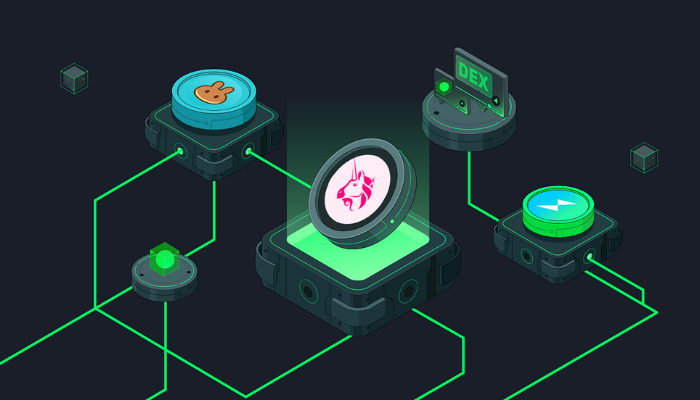A Next Generation DEX (Decentralized Exchange) represents the future of cryptocurrency trading. Unlike traditional exchanges, which are often centralized and require users to trust a third-party entity, a DEX operates on decentralized networks, offering users more control over their funds. A Next Generation DEX takes this concept even further, integrating cutting-edge technologies like ERC-4337 account abstraction and smart contract wallets, addressing the limitations of older models.
These platforms provide a more seamless and secure trading experience by enabling cross-chain compatibility, faster transactions, and lower fees. The rise of NEXDEX is an example of such innovation, offering a more efficient and user-friendly platform for crypto traders. With the increasing demand for decentralized finance (DeFi) solutions, Next Generation DEX platforms are emerging as key players in the evolving crypto ecosystem.
How Next Generation DEX is Different from Traditional DEX
Traditional DEX platforms often struggle with slow transaction speeds, limited liquidity, and cumbersome user interfaces. While they operate in a decentralized manner, they are constrained by blockchain bottlenecks and the complexity of smart contract interactions. These issues can make the user experience less efficient, especially for those new to crypto trading.
Next Generation DEX platforms, such as NEXDEX, leverage advanced technologies to overcome these limitations. They integrate account abstraction, which simplifies the process of managing assets on the blockchain by creating more user-friendly smart contract wallets. Additionally, these platforms enhance liquidity by enabling cross-chain trading, allowing users to access a wider range of assets and trade between different blockchains seamlessly.
Key Features of Next Generation DEX
One of the most significant improvements in Next Generation DEX platforms is their scalability. By addressing the congestion problems that traditional exchanges face, these platforms can handle a much higher volume of transactions without compromising speed or efficiency. This is crucial as the demand for cryptocurrency trading continues to grow.
Another key feature is the enhanced user experience (UX). Next Generation DEX platforms are designed with simplicity and accessibility in mind, ensuring that even novice traders can navigate them with ease. Features such as instant transaction processing and intuitive interfaces make these platforms more appealing to a broader audience. Moreover, the integration of AI for smart trading and predictive analytics further enhances the user experience, providing valuable insights for both beginners and seasoned traders.
Benefits of Using a Next Generation DEX
The advantages of using a Next Generation DEX are numerous. First, these platforms typically offer faster transactions with significantly lower fees compared to centralized exchanges. The decentralized nature of the exchange ensures that there are no intermediaries, reducing costs and speeding up the settlement process.
Another significant benefit is the enhanced security these platforms provide. With decentralized control and robust smart contract protocols, Next Generation DEX platforms minimize the risk of hacking and fraud. Moreover, these exchanges offer users full control over their private keys, eliminating the risks associated with custodial wallets. As a result, users enjoy greater privacy and a more secure trading environment.
Challenges and Limitations of Next Generation DEX
Despite their many benefits, Next Generation DEX platforms do come with their own set of challenges. One of the primary hurdles is the technical complexity involved in their development and operation. While these platforms offer advanced features, the underlying technologies can sometimes be difficult for everyday users to understand or navigate.
Additionally, regulatory concerns continue to pose challenges for decentralized platforms. Governments and regulatory bodies are still trying to figure out how to classify and regulate DEX platforms, which could lead to potential legal obstacles. Furthermore, while Next Generation DEX platforms enhance security, they are still reliant on smart contracts, which could be vulnerable to bugs or exploits if not properly audited.
The Future of Next Generation DEX in the Crypto Ecosystem
The future of Next Generation DEX platforms is bright, with ongoing developments aimed at enhancing functionality and accessibility. As the crypto market matures, these platforms will continue to evolve, incorporating more advanced features like decentralized identity management and improved consensus mechanisms.
Interoperability between different blockchains is expected to become a key focus, enabling users to trade assets across various blockchain networks with ease. The integration of decentralized oracles and off-chain data will also play a pivotal role in further enhancing the performance and reliability of these platforms. NEXDEX, for instance, is at the forefront of these innovations, constantly refining its technology to meet the growing needs of crypto traders.
Conclusion
Next Generation DEX platforms are transforming the landscape of cryptocurrency trading by offering enhanced security, faster transactions, and greater decentralization. As technologies like ERC-4337 account abstraction and smart contract wallets gain traction, these platforms are poised to address many of the limitations faced by traditional exchanges. While challenges remain, particularly around regulation and technical complexity, the future of Next Generation DEX looks promising. As platforms like NEXDEX continue to innovate, they will play an essential role in the decentralized finance ecosystem.



